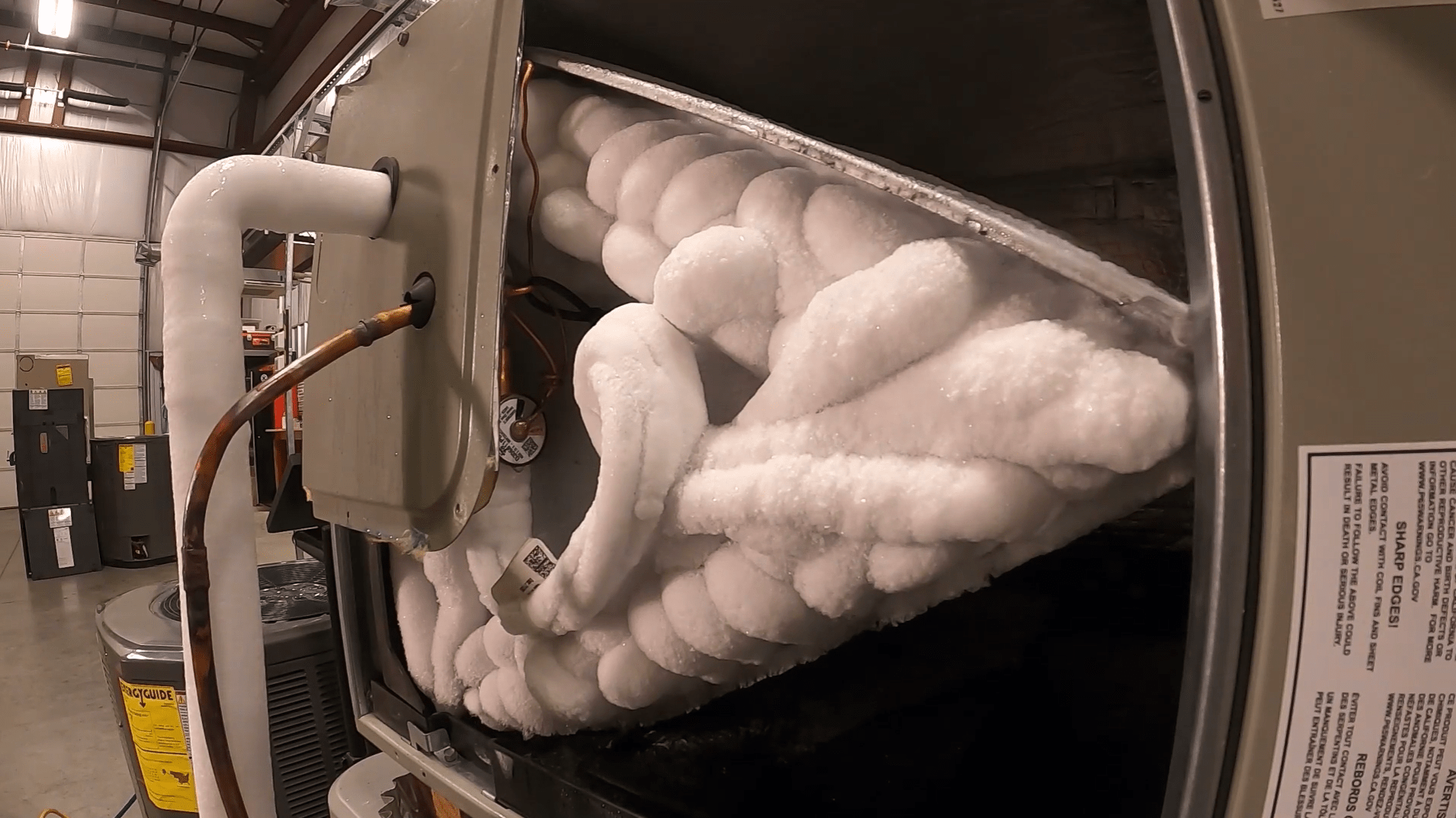What to Handle a Frozen AC Pipe - Critical Measures for Restoration
What to Handle a Frozen AC Pipe - Critical Measures for Restoration
Blog Article
Right here below you can find additional helpful expertise in relation to How can I fix an air conditioner’s frozen pipe?.

Intro
Discovering that your air conditioner pipeline is iced up can be concerning, especially throughout hot summertime when you depend on your air conditioning unit the most. Recognizing what to do in such a scenario is crucial to stop additional damages to your air conditioning system and ensure your comfort indoors.
Understanding the Causes
Numerous factors can contribute to the cold of an air conditioning pipe. Recognizing these causes can help you deal with the concern efficiently.
Absence of Airflow
One usual reason for a frozen a/c pipe is inadequate airflow. When the air flow over the evaporator coil is limited, it can cause the coil to drop below freezing temperature, leading to ice development on the pipeline.
Reduced Refrigerant Levels
Insufficient cooling agent degrees in your air conditioning system can additionally result in an icy pipe. Reduced refrigerant levels can cause the pressure in the system to drop, bring about the cold of moisture on the evaporator coil.
Winter Conditions
In cooler climates, freezing temperature levels outside can contribute to the cold of air conditioner pipes. If your AC system is not correctly shielded or if there are leaks in the ductwork, chilly air can penetrate the system, creating the pipe to ice up.
Dirty Air Filters
Filthy or clogged up air filters can restrict air movement in your a/c system, leading to numerous problems, including an icy pipe. It's vital to change or cleanse your air filterings system routinely to guarantee proper air movement and prevent ice accumulation.
Signs of a Frozen Air Conditioner Pipe
Acknowledging the indicators of a frozen AC pipe is important for prompt action.
Decreased Airflow
If you discover a significant reduction in air movement from your vents, it can indicate a frozen pipe.
Ice Buildup on the Pipe
Noticeable ice accumulation on the cooling agent line or the evaporator coil is a clear indication of a frozen air conditioning pipe.
Strange Sounds from the Unit
Unusual sounds, such as hissing or gurgling, originating from your AC system can indicate that there's ice existing on the pipeline.
Immediate Actions to Take
When confronted with a frozen a/c pipeline, it's important to act quickly to prevent more damages to your air conditioning system.
Switching off the air conditioning
The very first step is to shut off your air conditioning system to prevent the system from running and exacerbating the issue.
Checking for Blockages
Inspect the area around the indoor system for any obstructions that may be blocking airflow, such as furniture or curtains.
Defrosting the Pipe
You can use mild methods like positioning towels taken in cozy water around the frozen pipe to help thaw it slowly.
Safety nets
Taking safety nets can help avoid future incidents of a frozen AC pipeline.
Regular Maintenance Checks
Schedule regular upkeep consult a professional HVAC technician to make certain that your air conditioning system is running successfully.
Altering Air Filters
On a regular basis replace or clean your air filters to prevent airflow constraints and preserve optimal efficiency.
Shielding Exposed Pipes
If your a/c pipelines are subjected to chilly temperature levels, think about insulating them to stop freezing throughout cold weather.
Looking For Professional Help
If DIY approaches fail to solve the concern or if you're unclear about how to continue, it's ideal to seek help from a certified HVAC service technician.
When DIY Methods Fail
If your efforts to thaw the pipe or address various other issues are unsuccessful, it's time to employ a specialist.
Significance of Hiring a Professional HVAC Technician
A licensed HVAC professional has the know-how and tools required to detect and fix problems with your AC system securely and effectively.
Verdict
Dealing with a frozen air conditioning pipe can be an irritating experience, but understanding how to react can aid minimize damages and recover comfort to your home. By recognizing the reasons, recognizing the signs, and taking prompt action, you can efficiently deal with the concern and protect against future occurrences.
What to Do If Your AC Line Is Frozen
Make Sure All Supply and Return Air Vents Are Open
If you notice problems with airflow, the first thing you should do is check your supply and return vents. Supply vents distribute clean, conditioned air throughout your home. As this air becomes stale, it’s pulled into the return vent, where it’s reconditioned before being sent back out through the supply vent.
When these vents are closed, air won’t flow in the home. Before examining your AC, check the vents in every room and ensure they’re all open.
Check for a Dirty Air Filter
Another possible cause of limited airflow is a dirty air filter. Your air conditioner’s filters catch elements you don’t want to breathe in, such as dirt and dust. Over time, filters can become clogged, ultimately blocking air from flowing in and out. The lack of airflow can then cause the entire coil to freeze and will completely restrict any air from moving through it. The AC may need to be powered off for one to two days to allow the coil to thaw after replacing the filter to allow proper functioning of the unit. This debris can also accumulate on your AC’s evaporator coil, requiring a more serious repair. In general, air filters should be cleaned regularly (about every two weeks).
Assess Your Outdoor Unit
In addition to checking your AC, assessing the outdoor unit is a good idea. Also known as the condensing unit, it works with your interior unit to release heat outside. An issue with the outdoor unit can result in rising internal temperatures.
Overgrown Shrubs or Clogged Leaves
From leaves and twigs to shrubs and debris, there’s no shortage of outdoor elements that can accumulate around your condensing unit. When these elements get lodged inside the unit, they can block airflow. Fortunately, removing the blockage can solve the problem.
Sounds of a Broken Fan
Shrubs and leaves aren’t the only things that can impede your outdoor unit’s airflow. If the fan is broken, the unit won’t be able to properly get rid of heat — which means the internal temperature won’t go down. First, make sure the fan is spinning. If it is, check for the following sounds of a broken fan:
Buzzing Rattling Screeching Hissing Clicking Preventative Measures
Nobody wants to deal with a frozen AC line. In addition to causing problems with your air conditioner, they require professional repairs. On the bright side, there are preventative measures you can take to help ensure this issue doesn’t arise in the first place.
https://www.coopergreenteam.com/blog/what-to-do-if-ac-line-frozen

As a keen reader about What Do I Do If My AC Pipe Is Frozen, I was thinking sharing that excerpt was beneficial. Sharing is nice. Helping others is fun. Thank you so much for your time spent reading it.
Call Today Report this page